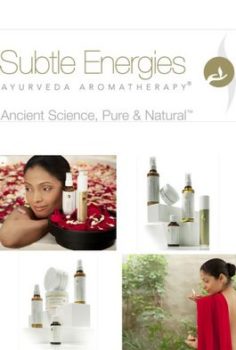Life Gate, South Australia
Decades of clinical experience and a very broad range of skills and perspectives gives us an edge.
Treatment Modalities
ACUPUNCTURE
The art of inserting fine needles into particular points on the body is as mystifying to most people as it is both ancient and highly effective. To a practitioner like myself, with decades of experience, I can still be amazed on a daily basis at the speed and simplicity with which a person’s pain level or mind state can be altered. It feels like the human body has been hard-wired with an in-built health promotion/re-balancing system, designed to be needled in order to generate therapeutic benefit.
You can understand more about the underlying mechanism of acupuncture by reading our article ‘How Does Acupuncture Work’, or find out what you can expect from an acupuncture treatment by reading ‘Acupuncture Practice’. Or if you want to explore how acupuncture fits into the broad field of Chinese Medicine, have a look at ‘Traditional Chinese Medicine’, ‘Fundamentals of Traditional Chinese Medicine’
For the exceptionally inquisitive patient, our little book ‘The Bare Bones of Oriental Medicine’ will give you everything you always wanted to know about the theories of Chinese Medicine.
CHINESE HERBAL MEDICINE
Acupuncture re-directs the Qi. It can re-arrange a person’s metabolism and get their organ systems operating more smoothly. But there is no nourishment in an acupuncture needle. If a person is deficient, they need to re-build their tissues with herbs.
Chinese Herbal Medicine (CHM) and Acupuncture go together like bread and butter. The herbs nourish the Blood and the needles re-direct the Qi. Using the two modalities together leads to more effective results, especially in cases of chronic disease. Both methods are based on the same body of Chinese Medicine principles, but in practice they are very different skills.
CHM treats the underlying cause of health problems by focusing on strengthening the body’s ability to maintain internal balance and heal itself. This is achieved by treating every patient’s individual pattern of disharmony. Treating these patterns of disharmony makes Chinese herbal therapy especially successful with disorders where the cause and mechanism is not fully known to modern medicine. Disorders that manifest in complex syndromes (e.g. Chronic Fatigue Syndrome) or disorders with multiple causes and complex mechanisms, like many chronic disorders, can also be treated successfully.
COUNSELLING & PSYCHOTHERAPY
Please understand, we are not trained counsellors, yet we have had decades of experience dealing with human psychology. It is simply a matter of being responsive to a person’s emotional stress and having common sense. This will often involve just listening, just lending a sympathetic ear and acknowledging a person’s experience. In other instances it will mean coming up with practical solutions or playing around with alternative perspectives.
Deborah and I draw on years of personal development training, Buddhist psychology and Buddhist meditation practices, liberally spiced with humour (which is, after all, the very best medicine).
In addition we practice in the context of Traditional Chinese Medicine (TCM) with all of its profound insights into the nature of the human being. TCM does not distinguish between body, mind and spirit but rather, these are seen as aspects of an interconnected whole. TCM describes a functional/energetic system of anatomy with the human body operating under the guidance of a network of interrelated Organ Systems, each of which is associated with a particular primary psychological state. So in terms of acupuncture treatment, there is a distinct connection between physiological and psychotherapeutic healing.
If you would like to explore this further, here is an extensive academic paper which discusses the psychological correspondences of the Chinese Medicine organ system: Oriental Medicine & Psychotherapy. Or perhaps you’d prefer this summary: Practical Psychotherapy which, even if I say so myself, is an excellent summary of how to obtain good mental health on a daily basis.
CUPPING AND GUASHA
These two techniques, Cupping and Guasha, are closely related and highly effective. They form part of the “folk medicine” of the Orient and deserve a worthy place in the tool kit of any Oriental Medicine practitioner or bodyworker. They achieve clinical results that are otherwise very labour intensive to attain.
Cupping technique is the better known of the two techniques, having appeared in the 1970’s film Zorba the Greek. Cupping technique is well known in many southern and eastern European cultures such as northern Italy, Greece, the Baltic states and Poland. I speculate the technique arrived in Europe from the Orient via the Silk Road trade route. The theory behind cupping technique blends well with ancient Greek theories of health and healing.
Early Chinese texts refer to cupping as a process to help expel “devils” or malevolent spirits. Similarly the Greeks referred to pathogenic “humours” or “winds” which could be expelled from the body.
HOT STONE THERAPY
This is an ancient technique which has undergone a phenomenal surge in popularity in recent years, for practitioners and clients alike. Smooth basalt stones are heated in water and then placed on the body to generate soothing sustained warmth. Large stones are commonly placed on the back muscles alongside the spine. Smaller stones can be used for the hands and feet. The stones will retain their heat for a significant time and the overall effect is deep, unwinding relaxation.
The hot stones can also be used with oil to massage the body, which is not only a great way to spread warmth into tensed muscles but also can be significantly less stress on the practitioners wrists and thumbs. The heat from the stones relaxes muscles, increases blood circulation and promotes mental relaxation.
MASSAGE THERAPY
Massage is a healing art. If you develop good hand skills you will become a competent massage practitioner; if you study hard and really think about what you are doing, you will become a massage therapist; if you add to this a loving and open heart, you will become a healer. Without Love there can be no Healing.
Deborah and I started our careers as Massage Therapists and even though I rarely do a full, stand alone, massage treatment these days, the art of massage will always be fundamental to my perspective.
Massage comes in all sorts of shapes and sizes. There are a wide variety of massage categories, with new fancy variations being made up on a daily basis. Here’s a brief guide to some of the more common ones:
ACUPRESSURE
DEEP TISSUE MASSAGE
INVIGORATION MASSAGE
LYMPHATIC DRAINAGE
RELAXATION MASSAGE
REMEDIAL AND THERAPEUTIC MASSAGE
SHIATSU
SPORTS MASSAGE
SWEDISH MASSAGE
TRIGGER POINT THERAPY
TUI NA
MOXIBUSTION
Moxibustion is the practice of burning a herb on or close to the body in order to generate specific therapeutic effects. The herb that is used is Artemesia Vulgaris, commonly known as Mugwort. The leaves of the mugwort plant are dried and refined to remove the rough stems and the resulting compound, which is known as moxa or moxa punk, has a soft and fluffy consistency which is readily moulded and burns smoothly.
The degree of refinement of the moxa punk determines a range of qualities: the most refined moxa punk is a pale golden yellow, it is very dry and fluffy, has few impurities and it ignites readily and burns evenly with very little smoke and a pleasant smell; the less refined moxa is darker and greener, it has thicker fibres and a coarser consistency and generates a harsher smoke.
NUTRITION
Good nutrition is one of the five fundamental methodologies of Chinese Medicine. To optimise your health it is imperative that you take great care with what you put in your mouth. It is quite common for people to be obliviously contributing directly to their pain and discomfort by daily indulgence in exactly the wrong foods.
There are many contrary ideas and much confusion with regard to what constitutes a good diet. Our approach to diet is simple and it coincides not only with the Traditional Chinese Medicine approach but also to several hundreds of thousands of years of human evolution. For all of our human development, up until 5 to 10 thousand years ago, we ate whatever we could hunt or gather: a wide variety of plant and animal foods.
The emphasis was definitely on seasonal selection; without supermarkets and greenhouses there was no choice. So the diet consisted of whatever was available in the local area in the way of roots and fruits, nuts and seeds and lots of leafy green plants. This was supplemented with meats, fish, eggs and poultry, whatever animal proteins could be hunted or trapped … and I think you all know which gender got which job.
It was not until approximately 10 – 12 thousand years ago in the fertile crescent of the Middle East that humans first began to domesticate animals and, a couple of thousand years later, to develop the art of planting grass seeds as crops. This of course lead to some wondrous leaps forward in human evolution. Small, semi-permanent villages grew to become towns; societies began to structure themselves into more specialised work categories; great new civilisations blossomed in Babylon and Egypt and humans embarked on a glorious journey of innovation and mastery of the material word.
All of this came at a substantial cost. The proximity of humans and animals, including the use of animal milks as a food source, gave rise to a massive influx of new diseases. Fortunately for the original Middle Eastern and North African populations, they experienced a relatively gradual adaption of their immune systems to these challenges. By the time of the great European civilisations the human population, though far from healthy, at least had several generations of immunity from a range of animal diseases. However, for the indigenous populations who were suddenly exposed to these animal virus-based diseases in later centuries, this had devastating consequences and significantly contributed to the dominance and plundering of Asia and the Americas by the Europeans.
POLARITY THERAPY
The Polarity Therapy health balancing system is a synthesis of eastern and western techniques blended with an understanding of the connection of body, mind and spirit. Created by Or. Randolph Stone, it represents the fruition of a life long study of Chiropractic, Osteopathy, Naturopathy, Biological Sciences and the ancient wisdom of east and west.
Polarity Therapy is based on an understanding of the atomic structure of the body and the resonance of these fundamental patterns of energy in creating and sustaining the structure and functions of anatomy and physiology. It is a broad synthesis which includes a unique program of exercise, nutritional regimes, an understanding of the relationship between spirit, mind and body and a series of simple, easy to learn techniques for re-polarising the body’s energy.
PULSE DIAGNOSIS
The art of reading the pulses is the central diagnostic technique of Chinese Medicine and in many ways shapes the whole character of Oriental Medicine practice. The practitioner feels (or ‘listens’ to) the pulse on both wrists at the radial artery, using the tips of three fingers. And just as a good mechanic can listen to a car engine and determine what is wrong with it, so too can the practitioner pick up disharmonies in the body by “listening” to the feel of the pulse.
The quality of the pulse is, of course, a direct link to the function and tone of the heart and blood vessels. So it is not difficult to understand how a careful feel of the pulse gives the practitioner an insight into the fluid dynamics of the life of the body. It is less easy to explain how the positions on the radial artery are specifically related to the individual organ systems of Chinese Medicine; but thousands of years of clinical practice says that it works.
In addition to focussing on the different positions of the pulse (three finger positions on each wrist with three levels of depth), the practitioner is assessing the quality and shape of the pulse in each of those positions. Pulse qualities such as strength, texture and rhythm give the practitioner valuable information on the condition of internal organs and tissues.
Reading the pulses is like looking through a small peep hole onto a vast landscape; what you feel will never be the total picture. So even though pulse diagnosis is regarded as the pre-eminent method for determining patterns of disharmony, it is always assessed in the context of the full range of four classical diagnostic methods.
REFLEXOLOGY
Otherwise known as zone therapy or compression foot massage, reflexology is a healing modality in its own right. It is based on the reflex points in the feet which connect with various parts of the whole body. By applying pressure to points on the feet we are able to stimulate the internal organs, enhance the circulation and affect the hormone levels in the body. In this manner many bodily functions can be restored to normal.
The evidence to support this theory is largely empirical. Certainly there are direct nervous connections between the feet and the spine and therefore to the rest of the body, but the precise correlations which are observed in Reflexology would be viewed with much scepticism by the orthodox medical profession. The fact is that we can observe the effects by direct application.
STRETCHING AND REMEDIAL EXERCISE
In order to get the best out of your body, to keep it well toned and vibrant and to overcome the stagnating effects of a sedentary lifestyle, it is essential to exercise. A little bit of time spent exercising your body, preferably every day, is an invaluable way of getting loose, increasing your strength and stimulating your own vitality.
Although we all tend to be busy and active, in fact we are not using our bodies thoroughly the way they are designed. With the increase in comfort that has arisen through technological development, we have lost the natural benefits that arise from exerting the body. The result is that many people are operating at only 50% efficiency and we are all, more or less, subject to loss of flexibility, chronic fatigue, increased susceptibility to disease, poor muscle tone, pain and stiffness.
TRADITIONAL CHINESE MEDICINE
Our clinical practice is part of a tradition going back thousands of years. For many generations, the physicians of China and Japan have blended the philosophical perspectives of ancient Taoist and Confucian sages with a keen observation of the natural world, developing a system of medicine with profound benefit for the modern world.
Within this system of medical thought, close attention is given to environmental factors and fundamental physics. The human body is seen as an interplay of primary forces, of heat and cold, fire and water, of upward and downward movement. These forces can be re-enforced or re-directed, promoting the conditions for optimal health and vitality.
There are many modalities and techniques within Chinese Medicine, the most widely known being the art of needling. The human body is viewed as having a network of channels through which the Qi and Blood, the vital forces of the body, flow and interact. These channels have key points on the surface that can be manipulated with direct pressure and the insertion of needles, thus tonifying and re-balancing various ecological factors within the human body.
Acupuncture itself is astounding in its action. It can have a profound and immediate benefit, eliminating a headache, a hot flush or a painful joint within a few brief minutes. The hidden side effects of acupuncture are equally beneficial: deep relaxation, emotional equanimity and mental clarity.
Chinese Medicine includes a highly sophisticated knowledge of herbal medicine. A vast pharmacopeia of plant, animal and mineral substances combined with a deep understanding of nutrition, helps to provide the correct internal environment, so all the tissues and organs of the body can operate in optimal conditions.
Chinese Medicine practice pays close attention to biomechanics. Massage and various exercise systems have a long history within East Asia. Likewise, the cultivation of mental health through ethics and discipline is intrinsic to the practice of Chinese Medicine.
Deborah and I are very grateful for the existence of Chinese Medicine as a healing art and we owe a deep respect to the generations of practitioners who have gone before us, practicing and refining this system for the benefit of humanity.
TONGUE DIAGNOSIS
According to Traditional Chinese Medicine, the tongue is closely related to Qi, Blood and Jin Ye as well as the Zang Fu. As the mucosa of the tongue is thin and transparent with a rich supply of blood, any changes observed in the tongue are indicative of internal changes. Thus the tongue serves as an indispensable diagnostic tool.
Classical TCM texts state that the tongue is a mirror of the Zang Fu. The channels of all the Zang Fu connect with the tongue either directly or indirectly. The channels that connect directly are the five Zang organs, the Heart, Liver, Spleen, Lung and Kidney, as well as the Triple Burner and Bladder. The tongue is divided in zones which relate to the various Zang Fu: the tip of the tongue reflects the Heart; the area just behind the tip of the tongue epresents the Lung; the central portion of the tongue represents the Stomach and Spleen; the sides of the tongue represent the Liver and Gallbladder; and the rear of the tongue represents the Kidney, Bladder and Intestines. In addition the sublingual veins are indicative of Kidney dysfunction. These zones are shown in Figure 27 below. These zones form the foundation of tongue diagnosis in combination with observation of the coating, the tongue body, and its shape and posture, each of which will be discussed in detail.
ZEN SHIATSU MASSAGE
The Japanese have a very particular style of manipulative bodywork involving the direct stimulation of points on the body with concentrated pressure. It is known as Shiatsu, which literally means finger pressure. Shiatsu is actually a combination of Chinese acupressure with traditional Japanese massage (Anma). Shiatsu focuses on the pressure points on the meridians, thus correcting metabolic imbalances as well as emphasising correction and maintenance of joints, tendons and muscles.
Shiatsu is not just a technique but an art form, relying heavily on the awareness of the practitioner for effective results. As such, one of the modern exponents of Shiatsu, Shizuto Masunaga, coined the term Zen Shiatsu. The story is told that he was treating a Meditation Master and after the treatment the monk said, “This is Zen between two people”. So Masunaga’s style of Shiatsu emphasises a close and empathetic rapport between practitioner and patient.



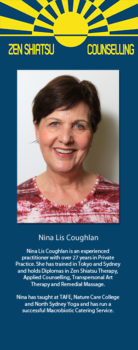

.gif)

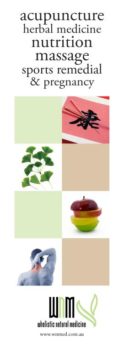

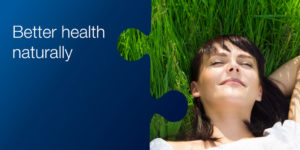
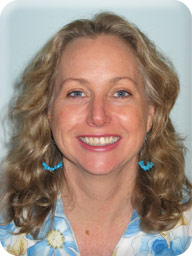

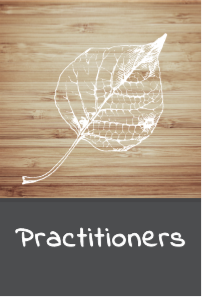

.gif)
.gif)
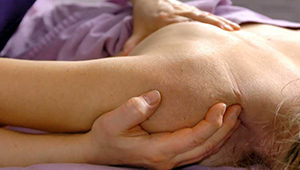

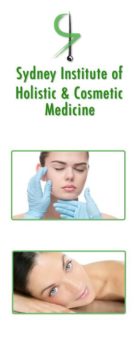

.gif)
